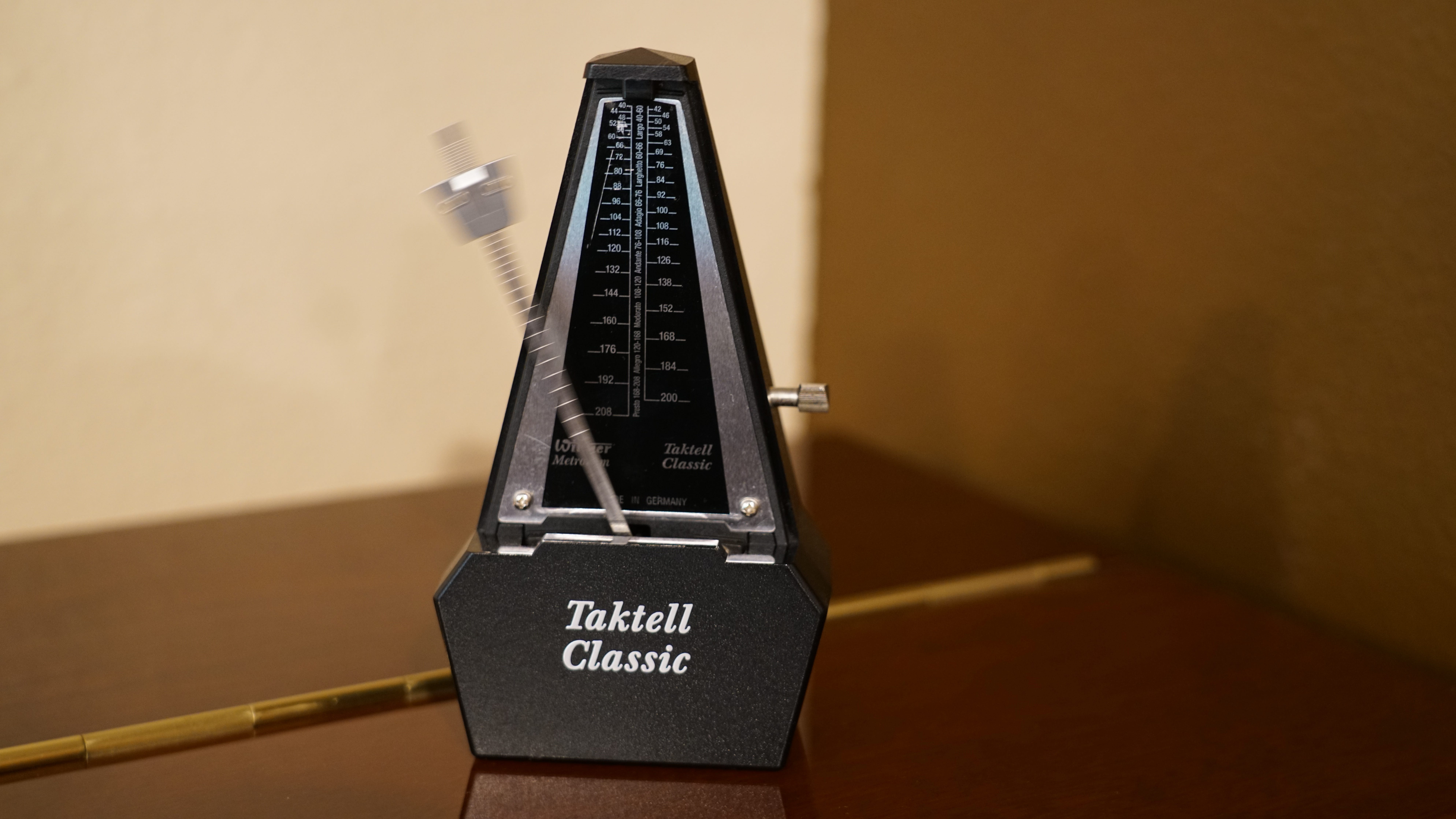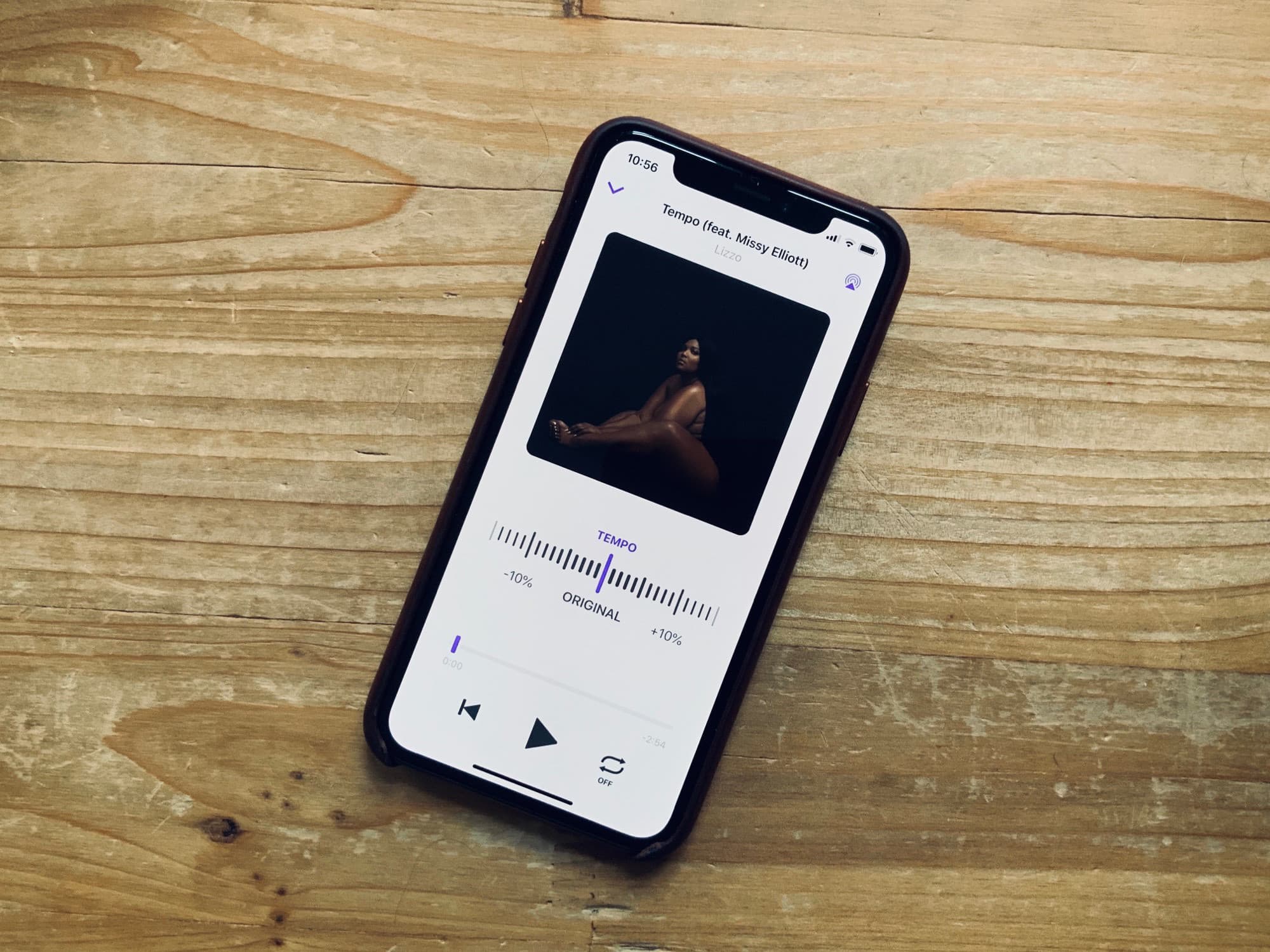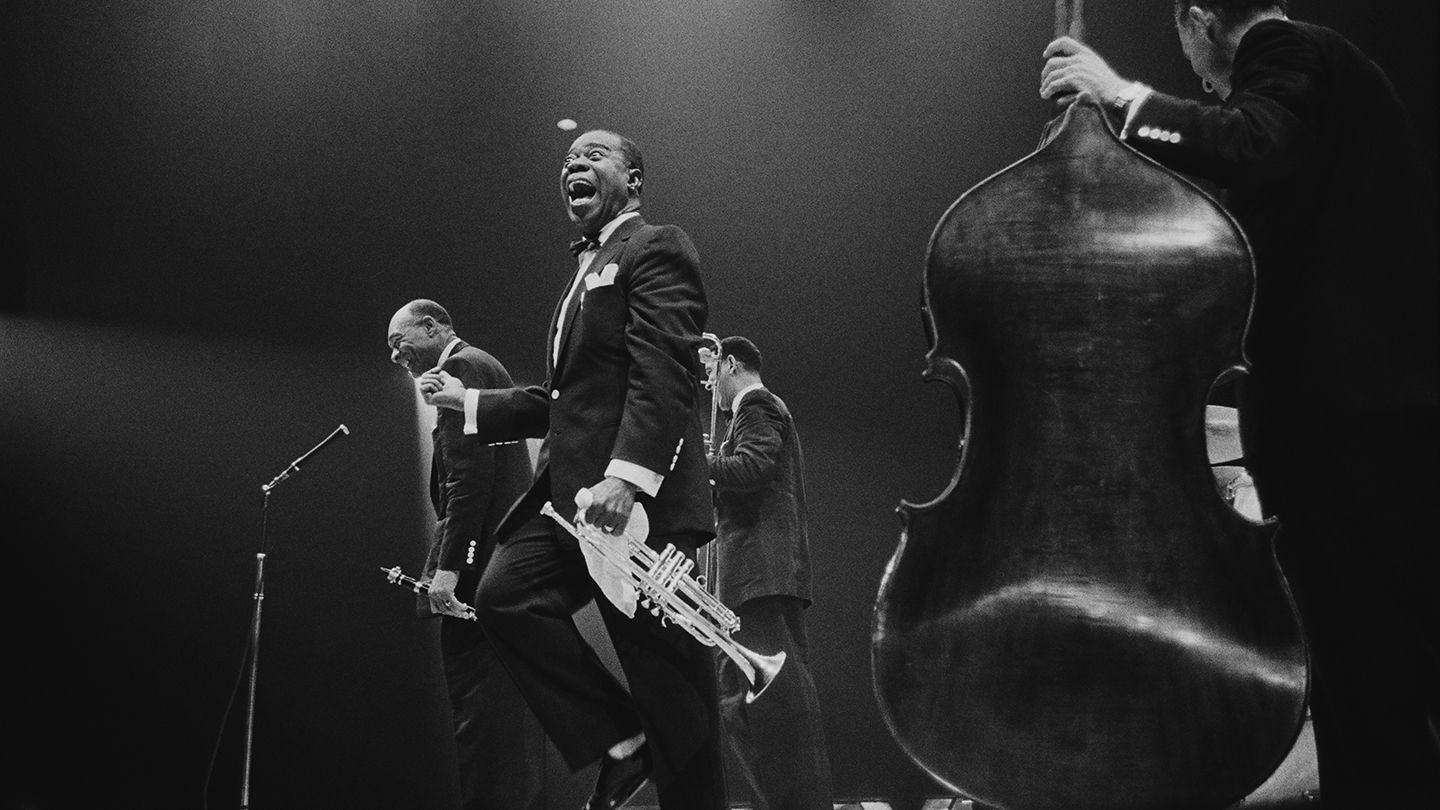Home>Production & Technology>Metronome>What Is The Average Speaking Tempo On A Metronome


Metronome
What Is The Average Speaking Tempo On A Metronome
Published: January 14, 2024
Discover the average speaking tempo on a metronome and improve your timing skills with our comprehensive guide. Learn how to use a metronome effectively.
(Many of the links in this article redirect to a specific reviewed product. Your purchase of these products through affiliate links helps to generate commission for AudioLover.com, at no extra cost. Learn more)
Table of Contents
Introduction
When it comes to effective communication, the tempo of speech plays a crucial role. Whether you are giving a presentation, participating in a lively discussion, or engaging in a casual conversation, the speed at which you speak can affect how well your message is conveyed and received. It is essential to find the right balance in your speaking tempo to ensure your audience can understand and absorb your words.
One tool that can help you in controlling your speaking tempo is a metronome. Yes, that’s right – the same instrument often associated with musicians and timing. A metronome is traditionally used in music to keep musicians in sync by providing a consistent beat or rhythm. However, its usefulness extends beyond the realm of music and can be harnessed to improve speaking tempo as well.
In this article, we will delve into the world of metronomes and explore the average speaking tempo that is considered optimal for effective communication. We will also discuss the factors that influence speaking tempo and how it can impact the message delivery. Additionally, we will provide practical tips and strategies to enhance your speaking tempo and improve your overall communication skills.
So, if you’re ready to discover the fascinating connection between metronomes and speaking tempo, let’s dive in!
Understanding the Concept of Speaking Tempo
Speaking tempo refers to the speed at which someone delivers their spoken words. It is essentially the pace at which we speak, ranging from slow and deliberate to fast and rapid. Just like music has different tempos, speech also has various tempo variations.
Speaking tempo is an essential aspect of effective communication. It can impact how well a message is understood, remembered, and received by the audience. Speaking too quickly can lead to confusion and a lack of comprehension, while speaking too slowly can result in boredom and disengagement. Finding the right tempo is essential to maintain the audience’s interest, facilitate understanding, and convey the intended message effectively.
Just like any other skill, speaking tempo can be learned and improved with practice and awareness. By understanding the concept of speaking tempo, individuals can enhance their communication skills and become more effective speakers.
Speaking tempo is influenced by several factors, including the individual’s natural speaking rate, the content of the message, the context of the communication, and the audience’s receptiveness. It is crucial to adapt the speaking tempo according to the situation to ensure clear and effective communication.
Next, let’s explore some of the factors that can influence speaking tempo and how they can impact the overall communication process.
Factors that Influence Speaking Tempo
Speaking tempo is influenced by a variety of factors that can vary from individual to individual and situation to situation. Understanding these factors can help individuals adjust their speaking tempo accordingly to ensure effective communication. Here are some of the key factors that influence speaking tempo:
- Natural Speaking Rate: Each person has their own natural speaking rate, which is their preferred tempo when they are not consciously controlling their speech. Some individuals naturally speak at a faster pace, while others tend to speak more slowly.
- Emotional State: Emotions can significantly impact speaking tempo. When excited or passionate, people often speak at a faster pace. Conversely, when feeling sad or contemplative, the tempo may slow down.
- Context and Purpose: The context and purpose of the communication play a significant role in determining the appropriate speaking tempo. For instance, a fast-paced tempo might be suitable for delivering a motivational speech, while a slower tempo may be more appropriate for conveying complex information.
- Language and Culture: Different languages and cultures have varying speaking tempos. For instance, some cultures may value a slower and more deliberate speaking tempo, while others may prefer a faster and more energetic pace.
- Audience: The audience or listeners’ characteristics and preferences can influence the optimal speaking tempo. For example, younger audiences may respond better to a faster tempo, while older individuals may prefer a slower pace.
- Content Complexity: The complexity of the content being communicated can impact speaking tempo. When discussing intricate or technical information, a slower tempo may be required to ensure understanding. Conversely, simple and straightforward content may be delivered at a quicker pace.
By considering these factors and adapting the speaking tempo accordingly, speakers can effectively engage their audience and ensure that their message is delivered with clarity and impact.
Measurement of Speaking Tempo
Measuring speaking tempo can provide valuable insights into an individual’s speech patterns and help identify areas for improvement. While it may seem challenging to quantify something as subjective as speaking tempo, there are a few methods and tools that can assist in its measurement.
One commonly used method involves calculating an individual’s words per minute (WPM) rate. This involves timing the duration of a speech or conversation and counting the number of words spoken during that time. By dividing the total number of words by the time in minutes, we can determine the WPM rate.
Another useful tool for measuring speaking tempo is a metronome. A metronome, typically associated with music and rhythm, can also be used as a timing device for speech. By setting the metronome to a specific tempo or beats per minute (BPM), speakers can practice speaking at a consistent pace by aligning their speech rhythm with the metronome’s beats.
Furthermore, there are several smartphone applications and software programs specifically designed to measure and analyze speaking tempo. These tools allow users to record their speech and provide detailed insights into their tempo, including variations, pauses, and overall speed. They can be valuable resources for individuals seeking to improve their speaking tempo.
While measuring speaking tempo can be informative, it is important to note that the goal is not merely to speak at a specific speed but rather to find the optimal tempo for effective communication. This may vary depending on the audience, context, and content being conveyed.
Next, let’s explore the average speaking tempo on a metronome and its implications for communication.
Average Speaking Tempo on a Metronome
While there is no universally agreed-upon “ideal” speaking tempo, research and anecdotal evidence suggest that an average speaking tempo of around 150 to 160 words per minute (WPM) is generally considered effective for most communication purposes.
Setting a metronome to this tempo allows speakers to maintain a steady rhythm and cadence in their speech, which can enhance clarity and comprehension. It provides a pace that allows the audience to follow along without feeling overwhelmed or bored.
However, it is important to note that the optimal speaking tempo can vary depending on the specific circumstances, such as the type of speech or the audience’s characteristics. For example, a persuasive or motivational speech may benefit from a slightly faster tempo to create a sense of energy and excitement, while a presentation on complex topics may require a slower tempo to ensure comprehension.
By practicing with a metronome set to the desired average speaking tempo, individuals can develop a sense of rhythm and flow in their speech. They can learn to modulate their pace, incorporating pauses and emphasis as needed to enhance the overall impact of their message.
It is worth mentioning that speaking tempo is not the sole factor determining effective communication. Non-verbal cues, vocal variety, and emotional connection also play important roles. Therefore, while a metronome can be a useful tool for practicing and refining speaking tempo, it should be seen as one component of a comprehensive communication strategy.
In the next section, let’s explore the impact of speaking tempo on communication and why it is crucial to find the right balance.
Impact of Speaking Tempo on Communication
The impact of speaking tempo on communication cannot be overstated. It can influence how well a message is received, understood, and retained by the audience. Here are some key ways in which speaking tempo can impact communication:
- Clarity and Comprehension: Speaking at an appropriate tempo allows listeners to process and understand the message more effectively. Speaking too fast can lead to information overload, while speaking too slowly may result in disengagement. Finding the right balance ensures clarity and comprehension.
- Engagement and Interest: Speaking at an engaging tempo can capture and maintain the audience’s interest. It helps to keep them focused and actively listening to the message. Varying the tempo occasionally can also add excitement and prevent monotony.
- Emphasis and Impact: Strategic use of tempo variations can highlight important points, emphasize key ideas, and create impact in the delivery. Pausing before or after a significant statement can also enhance its effect. Adjusting the tempo in these ways can enhance the overall effectiveness of the communication.
- Connection and Rapport: Speaking at a tempo that aligns with the audience’s expectations and preferences can foster a sense of connection and rapport. It helps to establish a comfortable and relatable atmosphere, enhancing the overall communication experience.
- Perception and Professionalism: The way an individual speaks and controls their tempo can influence how they are perceived by others. Speaking at an appropriate tempo signals professionalism, confidence, and competence in the subject matter.
It’s important to note that different situations may require adjustments in speaking tempo. For instance, in a formal presentation, a slightly slower pace may be appropriate to ensure clarity, while in a casual conversation, a more natural and conversational tempo may be preferred.
Ultimately, finding the right speaking tempo involves being aware of the audience, content, and context. It requires practice, flexibility, and the ability to adapt to different situations to ensure effective communication.
In the following section, we will provide some practical tips on how to improve speaking tempo.
How to Improve Speaking Tempo
Improving speaking tempo is a valuable skill that can enhance your communication effectiveness. Here are some practical tips to help you improve your speaking tempo:
- Practice with a metronome: Utilize a metronome to practice speaking at a consistent tempo. This tool can provide a steady rhythm to guide your speech and help you develop a sense of timing and pacing.
- Record and review: Record yourself speaking and listen to the playback. Pay attention to your tempo and identify areas where you may be speaking too fast or too slow. Aim for a balanced and steady pace.
- Use pauses strategically: Incorporate deliberate pauses at appropriate moments during your speech. Pausing can help emphasize key points, allow the audience to process information, and add a natural rhythm to your speaking.
- Vary your speaking tempo: Explore different speaking tempos to match the content and purpose of your communication. Practice speaking at a slightly faster tempo for motivational speeches or slower for conveying complex information.
- Pay attention to non-verbal cues: Your body language, facial expressions, and gestures should align with your speaking tempo. Maintain a confident and relaxed posture to support your pace.
- Seek feedback: Ask for feedback from trusted colleagues, mentors, or speaking coaches. They can provide valuable insights on your speaking tempo and offer suggestions for improvement.
- Observe skilled speakers: Study the speaking techniques of skilled communicators and pay attention to their tempo. Observe how they vary their pace, use pauses, and engage the audience.
- Practice mindfulness: Develop mindfulness in your speaking by being present in the moment. Focus on maintaining a steady and comfortable tempo, and avoid rushing or dragging your words.
- Seek professional training: Consider attending workshops or enrolling in public speaking courses to receive expert guidance on improving your speaking tempo. These programs often provide personalized feedback and tailored exercises to help you refine your skills.
Remember, improving your speaking tempo requires consistent practice and self-awareness. Embrace the process and be patient with yourself as you develop greater control and fluidity in your speech.
Let’s conclude our exploration of speaking tempo in the next section.
Conclusion
Speaking tempo is a vital aspect of effective communication. Finding the right balance in your speaking tempo can greatly impact how well your message is received, understood, and retained by your audience. By understanding the concept of speaking tempo and the factors that influence it, you can enhance your communication skills and become a more effective speaker.
Metronomes, traditionally used in music, can also be valuable tools for improving your speaking tempo. Setting a metronome to an average speaking tempo of around 150-160 words per minute can help you maintain a steady rhythm, enhance clarity, and engage your audience.
However, it’s important to consider that the optimal speaking tempo can vary depending on factors such as the audience, context, and content being communicated. Adapting your tempo accordingly can ensure effective communication and create a connection with your listeners.
Improving your speaking tempo involves practice, awareness, and feedback. Utilizing techniques such as recording and reviewing your speech, using pauses strategically, and seeking professional guidance can help you refine your speaking tempo and enhance your overall communication skills.
Remember, effective communication is a combination of various elements, including non-verbal cues, vocal variety, and emotional connection. By mastering your speaking tempo and incorporating it harmoniously with these aspects, you can deliver impactful and engaging messages.
So, take the time to develop your speaking tempo, be mindful of the pace at which you speak, and practice with intention. By doing so, you can become a more confident and persuasive communicator in any situation.











